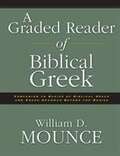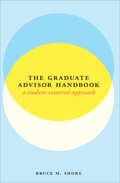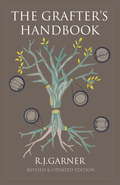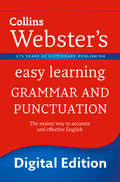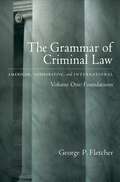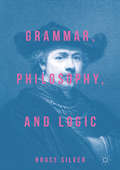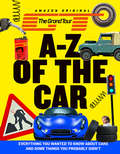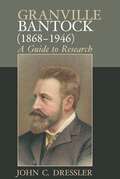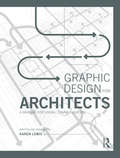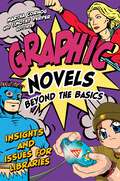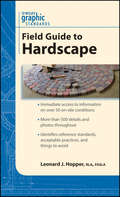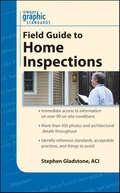- Table View
- List View
Graded Reader of Biblical Greek (PDF)
by William D. MounceMaking the leap from the basics of biblical Greek to its real-life application can be a frustrating challenge for students of intermediate Greek. A Graded Reader of Biblical Greek was developed to make the transition easier. It takes beginning exegetes from simple to progressively more difficult biblical texts. Students can now learn New Testament Greek the way they would any other language: through a graded program. A Graded Reader of Biblical Greek applies an inductive method to learning intermediate Greek grammar. It provides a workable introduction to exegesis, word studies, and developing a large vocabulary; and it assists the student in preparing for class, allowing classroom time to be put to its most effective use. Twenty Greek passages are presented in graded order. Difficult and unfamiliar grammatical constructions are explained. All words that occur fewer than 20 times in the New Testament are defined. An "Exegetical Discussion" section helps the exegete gain a deeper understanding of the language. A Graded Reader of Biblical Greek is the result of ten years of use and refinement by the author in an actual classroom setting.
The Graduate Advisor Handbook: A Student-Centered Approach (Chicago Guides to Academic Life)
by Bruce M. ShoreIn the sink-or-swim world of academia, a great graduate advising can be a lifesaver. But with university budgets shrinking and free time evaporating, advisors often need a mentor themselves to learn how to best support their advisees. Bruce M. Shore, an award-winning advisor with more than forty years of advising experience, is just the coach that graduate advisors need. With The Graduate Advisor Handbook: A Student-Centered Approach, Shore demystifies the advisor-student relationship, providing tips and practical advice that will help both students and advisors thrive. One of the first books to approach advising from the advisor’s point of view, the handbook highlights the importance of a partnership in which both parties need to be invested. Shore emphasizes the interpersonal relationships at the heart of advising and reveals how advisors can draw on their own strengths to create a rewarding rapport. The Graduate Advisor Handbook moves chronologically through the advising process, from the first knock on the door to the last reference letter. Along the way it covers transparent communication, effective motivation, and cooperative troubleshooting. Its clear-eyed approach also tackles touchy subjects, including what to do when personal boundaries are crossed and how to deliver difficult news. Sample scripts help advisors find the right words for even the toughest situations. With resources dwindling and student and advising loads increasing, graduate advisors need all the resources they can find to give their students the help they need. The Graduate Advisor Handbook has the cool-headed advice and comprehensive coverage that advisors need to make the advising relationship not just effective but also enjoyable.
The Graduate Advisor Handbook: A Student-Centered Approach (Chicago Guides to Academic Life)
by Bruce M. ShoreIn the sink-or-swim world of academia, a great graduate advising can be a lifesaver. But with university budgets shrinking and free time evaporating, advisors often need a mentor themselves to learn how to best support their advisees. Bruce M. Shore, an award-winning advisor with more than forty years of advising experience, is just the coach that graduate advisors need. With The Graduate Advisor Handbook: A Student-Centered Approach, Shore demystifies the advisor-student relationship, providing tips and practical advice that will help both students and advisors thrive. One of the first books to approach advising from the advisor’s point of view, the handbook highlights the importance of a partnership in which both parties need to be invested. Shore emphasizes the interpersonal relationships at the heart of advising and reveals how advisors can draw on their own strengths to create a rewarding rapport. The Graduate Advisor Handbook moves chronologically through the advising process, from the first knock on the door to the last reference letter. Along the way it covers transparent communication, effective motivation, and cooperative troubleshooting. Its clear-eyed approach also tackles touchy subjects, including what to do when personal boundaries are crossed and how to deliver difficult news. Sample scripts help advisors find the right words for even the toughest situations. With resources dwindling and student and advising loads increasing, graduate advisors need all the resources they can find to give their students the help they need. The Graduate Advisor Handbook has the cool-headed advice and comprehensive coverage that advisors need to make the advising relationship not just effective but also enjoyable.
The Graduate Advisor Handbook: A Student-Centered Approach (Chicago Guides to Academic Life)
by Bruce M. ShoreIn the sink-or-swim world of academia, a great graduate advising can be a lifesaver. But with university budgets shrinking and free time evaporating, advisors often need a mentor themselves to learn how to best support their advisees. Bruce M. Shore, an award-winning advisor with more than forty years of advising experience, is just the coach that graduate advisors need. With The Graduate Advisor Handbook: A Student-Centered Approach, Shore demystifies the advisor-student relationship, providing tips and practical advice that will help both students and advisors thrive. One of the first books to approach advising from the advisor’s point of view, the handbook highlights the importance of a partnership in which both parties need to be invested. Shore emphasizes the interpersonal relationships at the heart of advising and reveals how advisors can draw on their own strengths to create a rewarding rapport. The Graduate Advisor Handbook moves chronologically through the advising process, from the first knock on the door to the last reference letter. Along the way it covers transparent communication, effective motivation, and cooperative troubleshooting. Its clear-eyed approach also tackles touchy subjects, including what to do when personal boundaries are crossed and how to deliver difficult news. Sample scripts help advisors find the right words for even the toughest situations. With resources dwindling and student and advising loads increasing, graduate advisors need all the resources they can find to give their students the help they need. The Graduate Advisor Handbook has the cool-headed advice and comprehensive coverage that advisors need to make the advising relationship not just effective but also enjoyable.
The Graduate Advisor Handbook: A Student-Centered Approach (Chicago Guides to Academic Life)
by Bruce M. ShoreIn the sink-or-swim world of academia, a great graduate advising can be a lifesaver. But with university budgets shrinking and free time evaporating, advisors often need a mentor themselves to learn how to best support their advisees. Bruce M. Shore, an award-winning advisor with more than forty years of advising experience, is just the coach that graduate advisors need. With The Graduate Advisor Handbook: A Student-Centered Approach, Shore demystifies the advisor-student relationship, providing tips and practical advice that will help both students and advisors thrive. One of the first books to approach advising from the advisor’s point of view, the handbook highlights the importance of a partnership in which both parties need to be invested. Shore emphasizes the interpersonal relationships at the heart of advising and reveals how advisors can draw on their own strengths to create a rewarding rapport. The Graduate Advisor Handbook moves chronologically through the advising process, from the first knock on the door to the last reference letter. Along the way it covers transparent communication, effective motivation, and cooperative troubleshooting. Its clear-eyed approach also tackles touchy subjects, including what to do when personal boundaries are crossed and how to deliver difficult news. Sample scripts help advisors find the right words for even the toughest situations. With resources dwindling and student and advising loads increasing, graduate advisors need all the resources they can find to give their students the help they need. The Graduate Advisor Handbook has the cool-headed advice and comprehensive coverage that advisors need to make the advising relationship not just effective but also enjoyable.
The Graduate Advisor Handbook: A Student-Centered Approach (Chicago Guides to Academic Life)
by Bruce M. ShoreIn the sink-or-swim world of academia, a great graduate advising can be a lifesaver. But with university budgets shrinking and free time evaporating, advisors often need a mentor themselves to learn how to best support their advisees. Bruce M. Shore, an award-winning advisor with more than forty years of advising experience, is just the coach that graduate advisors need. With The Graduate Advisor Handbook: A Student-Centered Approach, Shore demystifies the advisor-student relationship, providing tips and practical advice that will help both students and advisors thrive. One of the first books to approach advising from the advisor’s point of view, the handbook highlights the importance of a partnership in which both parties need to be invested. Shore emphasizes the interpersonal relationships at the heart of advising and reveals how advisors can draw on their own strengths to create a rewarding rapport. The Graduate Advisor Handbook moves chronologically through the advising process, from the first knock on the door to the last reference letter. Along the way it covers transparent communication, effective motivation, and cooperative troubleshooting. Its clear-eyed approach also tackles touchy subjects, including what to do when personal boundaries are crossed and how to deliver difficult news. Sample scripts help advisors find the right words for even the toughest situations. With resources dwindling and student and advising loads increasing, graduate advisors need all the resources they can find to give their students the help they need. The Graduate Advisor Handbook has the cool-headed advice and comprehensive coverage that advisors need to make the advising relationship not just effective but also enjoyable.
The Graduate Advisor Handbook: A Student-Centered Approach (Chicago Guides to Academic Life)
by Bruce M. ShoreIn the sink-or-swim world of academia, a great graduate advising can be a lifesaver. But with university budgets shrinking and free time evaporating, advisors often need a mentor themselves to learn how to best support their advisees. Bruce M. Shore, an award-winning advisor with more than forty years of advising experience, is just the coach that graduate advisors need. With The Graduate Advisor Handbook: A Student-Centered Approach, Shore demystifies the advisor-student relationship, providing tips and practical advice that will help both students and advisors thrive. One of the first books to approach advising from the advisor’s point of view, the handbook highlights the importance of a partnership in which both parties need to be invested. Shore emphasizes the interpersonal relationships at the heart of advising and reveals how advisors can draw on their own strengths to create a rewarding rapport. The Graduate Advisor Handbook moves chronologically through the advising process, from the first knock on the door to the last reference letter. Along the way it covers transparent communication, effective motivation, and cooperative troubleshooting. Its clear-eyed approach also tackles touchy subjects, including what to do when personal boundaries are crossed and how to deliver difficult news. Sample scripts help advisors find the right words for even the toughest situations. With resources dwindling and student and advising loads increasing, graduate advisors need all the resources they can find to give their students the help they need. The Graduate Advisor Handbook has the cool-headed advice and comprehensive coverage that advisors need to make the advising relationship not just effective but also enjoyable.
The Grafter's Handbook: Revised & updated edition
by Steve Bradley R. J. GarnerR. J. Garner's The Grafter's Handbook is the classic reference book on plant propagation by grafting and has now been revised and updated for a new generation by respected horticulturalist, Steven Bradley. Everything the dedicated amateur, student and professional horticulturalist wants to know about grafting is here, clearly written in a concise and straightforward style. Chapters include Compatibility & Cambial Contact, Rootstocks & their Propagation, Tools & Accessories, Methods of Grafting and Grafting Established Trees.
Grammar and Punctuation (Collins Webster’s Easy Learning)
by CollinsCollins Webster’s Easy Learning Grammar is an accessible guide to English grammar and punctuation. With clear, concise explanations on everything from adverbs to word order, and from apostrophes to semicolons, this e-book is indispensable for understanding correct usage.
The Grammar of Criminal Law: Volume One: Foundations
by George P. FletcherThe Grammar of Criminal Law is a 3-volume work that addresses the field of international and comparative criminal law, with its primary focus on the issues of international concern, ranging from genocide, to domestic efforts to combat terrorism, to torture, and to other international crimes. The first volume is devoted to foundational issues. The Grammar of Criminal Law is unique in its systematic emphasis on the relationship between language and legal theory; there is no comparable comparative study of legal language. Written in the spirit of Fletcher's classic Rethinking Criminal Law, this work is essential reading in the field of international and comparative law.
Grammar, Philosophy, and Logic
by Bruce SilverThis book argues that a basic grasp of philosophy and logic can produce written and spoken material that is both grammatically correct and powerful. The author analyses errors in grammar, word choice, phrasing and sentences that even the finest writers can fail to notice; concentrating on subtle missteps and errors that can make the difference between good and excellent prose. Each chapter addresses how common words and long-established grammatical rules are often misused or ignored altogether – including such common words as ‘interesting’, ‘possible’, and ‘apparent’. By tackling language in this way, the author provides an illuminating and practical stylistic guide that will interest students and scholars of grammar and philosophy, as well as readers looking to improve their technical writing skills.
Grammar, Philosophy, and Logic
by Bruce SilverThis book argues that a basic grasp of philosophy and logic can produce written and spoken material that is both grammatically correct and powerful. The author analyses errors in grammar, word choice, phrasing and sentences that even the finest writers can fail to notice; concentrating on subtle missteps and errors that can make the difference between good and excellent prose. Each chapter addresses how common words and long-established grammatical rules are often misused or ignored altogether – including such common words as ‘interesting’, ‘possible’, and ‘apparent’. By tackling language in this way, the author provides an illuminating and practical stylistic guide that will interest students and scholars of grammar and philosophy, as well as readers looking to improve their technical writing skills.
Grammar Secrets (Collins Little Books)
by Caroline TaggartLet’s admit it, we all struggle with Grammar. There, they’re or their? Who’s or whose? Me or I? Fewer or less? Inside this little book one of Britain’s top Grammar Gurus reveals all you need to know about Grammar but were afraid to ask.
The Grand Tour A-Z of the Car: Everything You Wanted To Know About Cars And Some Things You Probably Didn't
by HarperCollinsDid you know there are over 47,000 facts in the world?* And the good news is, many of them are in this book. That’s right, The Grand Tour A-Z of the Car is the only reference guide you need for cars, driving and all related matters, especially if you’re not too fussed about those facts being accurate.
Grandad's Wit and Wisdom: Quips and Quotes for Glorious Grandpas
by Richard BensonWhen your roses have been trampled by little feet and the golf has been hijacked by children’s TV, reach for this hilarious book, crammed full of quips and quotes to remind you why being a grandad is one of the best jobs in the world.
Grandma's Wit and Wisdom: Quips and Quotes for the Greatest Grannies
by Richard BensonWhen there are sticky handprints on the sofa and you can’t prise the darlings away from a screen, reach into your handbag for this hilarious book, crammed full of quips and quotes to remind you why being a grandma is one of the best jobs in the world.
Granny's Household Hints: Traditional Tips for a Clean, Green Home
by Brenda EvansIn Granny's day there were few labour-saving devices or fancy cleaning products. So when it comes to getting stains out of the carpet or keeping her laundry sparkling white, she still prefers tried-and-tested techniques handed down through the generations. Many people nowadays would prefer to use natural, traditional cleaning methods, rather than chemicals that can be harmful to our health and the environment. So why not follow in Granny's footsteps and try her effective, green and surprisingly simple household hints? Learn how to keep your home spotless using common ingredients found in your kitchen cupboard, like lemon juice or bicarbonate of soda. You'll be helping the planet and your wallet too ... Granny would be proud!
The Grants Register 2016: The Complete Guide To Postgraduate Funding Worldwide
by Palgrave MacMillan LtdGranville Bantock: A Guide to Research (Clemson University Press)
by John C. DresslerThe book will contain location and descriptive details of Bantock's manuscripts that are extant, which will assist those looking to construct editions of those works which have remained in manuscript and updated editions of those works which were initially published nearly 100 years ago. A discography provides insight into the wide variety of recording companies that first served Bantock’s music. It also includes more recent and more highly refined recording sonics that help listeners hear these works in a much more solid balance and quality of sound than the multitude of 78 rpm recordings which form the initial recordings of any of Bantock’s pieces. Included in the book are sections which highlight academic theses and dissertations that discuss some of Bantock’s works. In addition citations of locations of many of Bantock’s letters still available for study are included. An index that cross-references all of these details to the works which they highlight is a major help to the reader.
Graphic Design for Architects: A Manual for Visual Communication
by Karen LewisGraphic Design for Architects is a handbook of techniques, explanations and examples of graphic design most relevant to architects. The book covers a variety of scales of graphic design, everything from portfolio design and competition boards, to signage and building super-graphics – to address every phase of architectural production. This book combines and expands on information typically found in graphic design, information design, and architectural graphics books. As architectural communication increases to include more territory and components of a project, it is important for designers to be knowledgeable about the various ways in which to communicate visually. For instance, signage should be designed as part of the process – not something added at the end of a project; and the portfolio is a manifestation of how the designer works, not just an application to sell a design sensibility. In thinking about architecture as a systematic and visual project, the graphic design techniques outlined in this book will help architects process, organize and structure their work through the lens of visual communication. Each chapter is titled and organized by common architectural modes of communication and production. The chapters speak to architects by directly addressing projects and topics relevant to their work, while the information inside each chapter presents graphic design methods to achieve the architects’ work. In this way, readers don’t have to search through graphic design books to figure out what’s relevant to them – this book provides a complete reference of graphic techniques and methods most useful to architects in getting their work done.
Graphic Design for Architects: A Manual for Visual Communication
by Karen LewisGraphic Design for Architects is a handbook of techniques, explanations and examples of graphic design most relevant to architects. The book covers a variety of scales of graphic design, everything from portfolio design and competition boards, to signage and building super-graphics – to address every phase of architectural production. This book combines and expands on information typically found in graphic design, information design, and architectural graphics books. As architectural communication increases to include more territory and components of a project, it is important for designers to be knowledgeable about the various ways in which to communicate visually. For instance, signage should be designed as part of the process – not something added at the end of a project; and the portfolio is a manifestation of how the designer works, not just an application to sell a design sensibility. In thinking about architecture as a systematic and visual project, the graphic design techniques outlined in this book will help architects process, organize and structure their work through the lens of visual communication. Each chapter is titled and organized by common architectural modes of communication and production. The chapters speak to architects by directly addressing projects and topics relevant to their work, while the information inside each chapter presents graphic design methods to achieve the architects’ work. In this way, readers don’t have to search through graphic design books to figure out what’s relevant to them – this book provides a complete reference of graphic techniques and methods most useful to architects in getting their work done.
Graphic Novels Beyond the Basics: Insights and Issues for Libraries
This study of the graphic novel and its growth in the library helps librarians utilize and develop this extraordinarily popular format in their library collections.What does the surge of popularity in graphic novels mean for libraries? Graphic Novels Beyond the Basics: Insights and Issues for Libraries goes deeper into this subject than any other volume previously published, bringing together a distinguished panel of experts to examine questions librarians may encounter as they work to enhance their graphic novel holdings.Graphic Novels Beyond the Basics begins by introducing librarians to the world of the graphic novel: popular and critically acclaimed fiction and nonfiction titles; a wide range of genres including Japanese manga and other international favorites; recurring story and character archetypes; and titles created for specific cultural audiences and female readers. The book then offers a series of chapters on key issues librarians will face with graphic novels on the shelves, including processing and retention questions, preservation and retention, collecting related media such as Japanese anime films and video games, potential grounds for patron or parental complaints, the future of graphic novels, and more.
Graphic Standards Field Guide to Hardscape
by Leonard J. HopperQuick, reliable answers to your most common on-site questions When you're in the field, you never know what you'll come across. The Graphic Standards Field Guide to Hardscape gives you fast access to the practical information you need when you're on-site and under pressure. Presented in a highly visual and easily portable format, the Field Guide is organized to follow a logical project sequence from site evaluation of existing conditions through construction maintenance. Covering everything from assessing existing conditions, site work, bases and paving, site improvements, and materials, this handy companion conveys the most common answers that landscape architects need in the real world when visiting a construction site, and meeting with architects and engineers or clients and contractors. The Field Guide to Hardscape extends the familiar Landscape Architectural Graphic Standards beyond the office or studio with: Quick access to essential information when away from the studio Things to look for when assessing existing conditions during preliminary design site visits or pre-construction meetings Graphic Standards—quality details accompanied by real-world photographs of best construction practices and techniques Illustrations that help you troubleshoot problems, along with on-the-spot solutions A list of common construction mistakes and problems to avoid Compact format that's easy to reference and carry along The Graphic Standards Field Guide to Hardscape is the ideal companion for the on-the-go landscape architect, design professional, inspector, facilities manager or anyone that is involved with site construction.
Graphic Standards Field Guide to Hardscape (Coursesmart Ser.)
by Leonard J. Hopper Rla FaslaQuick, reliable answers to your most common on-site questions When you're in the field, you never know what you'll come across. The Graphic Standards Field Guide to Hardscape gives you fast access to the practical information you need when you're on-site and under pressure. Presented in a highly visual and easily portable format, the Field Guide is organized to follow a logical project sequence from site evaluation of existing conditions through construction maintenance. Covering everything from assessing existing conditions, site work, bases and paving, site improvements, and materials, this handy companion conveys the most common answers that landscape architects need in the real world when visiting a construction site, and meeting with architects and engineers or clients and contractors. The Field Guide to Hardscape extends the familiar Landscape Architectural Graphic Standards beyond the office or studio with: Quick access to essential information when away from the studio Things to look for when assessing existing conditions during preliminary design site visits or pre-construction meetings Graphic Standards—quality details accompanied by real-world photographs of best construction practices and techniques Illustrations that help you troubleshoot problems, along with on-the-spot solutions A list of common construction mistakes and problems to avoid Compact format that's easy to reference and carry along The Graphic Standards Field Guide to Hardscape is the ideal companion for the on-the-go landscape architect, design professional, inspector, facilities manager or anyone that is involved with site construction.
Graphic Standards Field Guide to Home Inspections (Graphic Standards Field Guide series #4)
by Stephen GladstoneQuick, reliable answers to your most common on-site questions When you're in the field, you never know what you'll come across. The Wiley Graphic Standards Field Guide to Home Inspections gives you fast access to the information you need when you're on-site and under pressure. Presented in a highly visual and easily portable format, the Graphic Standards Field Guide to Home Inspections is organized according to CSI's Masterformat standards of practice. It covers everything from inspection preparation to on-site safety, conveying the most common answers with practical instruction about home inspections that the professional inspector, architect, engineer, or contractor needs to access quickly out in the field to evaluate an existing residential property. The Field Guide to Home Inspections extends the Graphic Standards experience outside of the office and into the field, with: Quick access to essential information wherever you are Graphic Standards-quality details accompanied by real-world photographs of the common conditions you'll find in residential buildings Illustrations that help you troubleshoot problems, along with on-the-spot solutions Compact format that's easy to reference and carry along The Graphic Standards Field Guide to Home Inspections is the ideal companion for the on-the-go professional home inspector.
